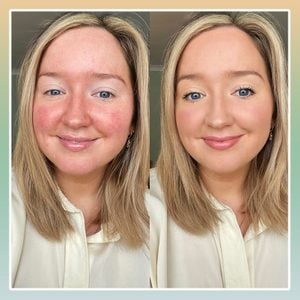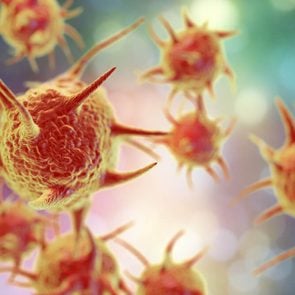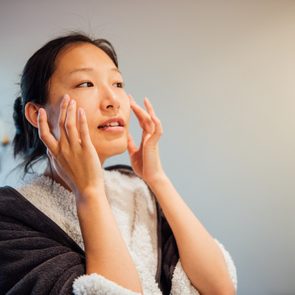What are Demodex Mites? How Face Mites Are Linked to Skin Problems
Updated: Jan. 19, 2021
You probably have Demodex mites living on your face, and that's normal. Here's everything you need to know about these mites and how they are connected with skin conditions like rosacea.
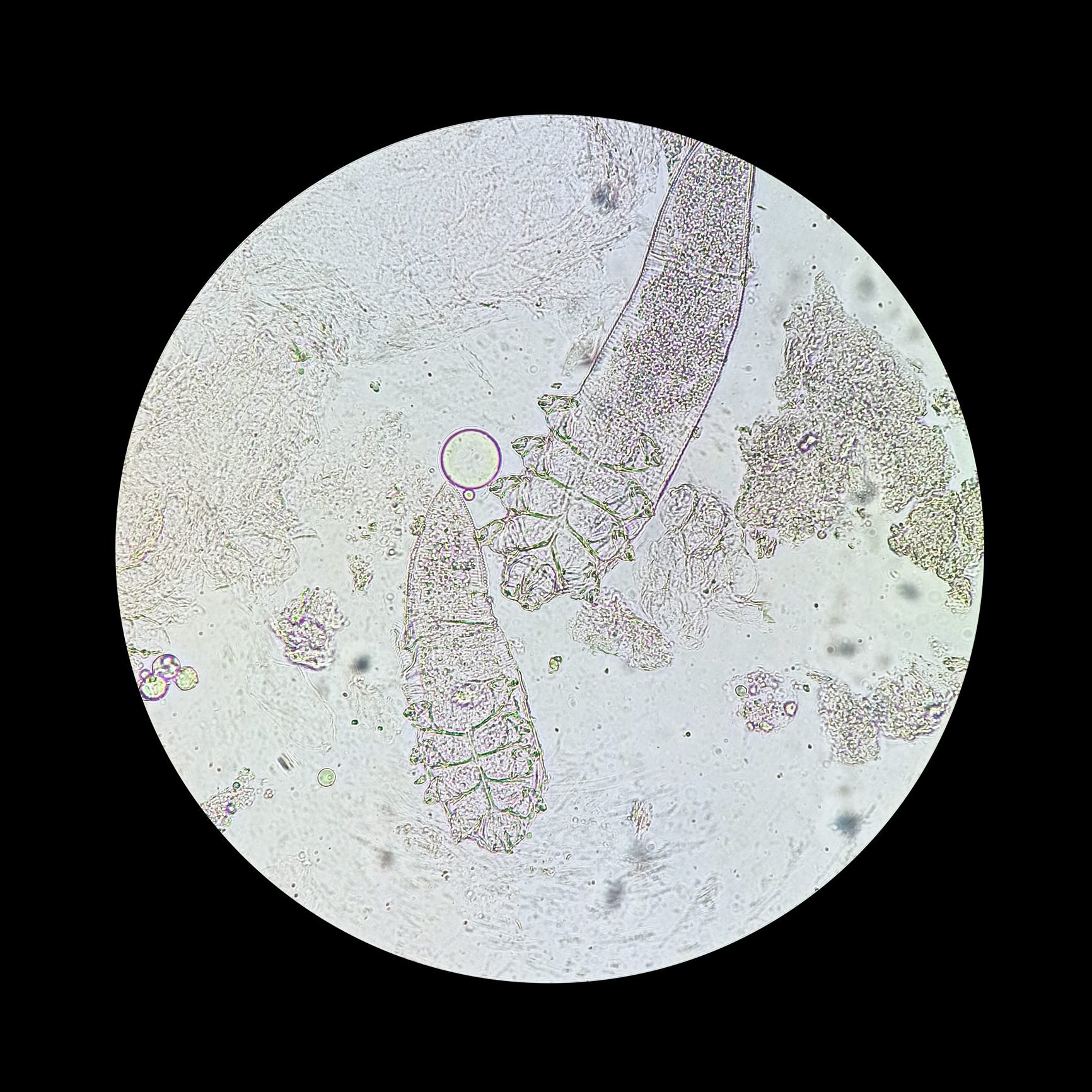
What are Demodex mites?
Don’t panic, but tiny mites are likely living on your body. Although this might be disturbing news, don’t stress. It’s quite common for all people to have some Demodex mites since they naturally occur on the skin. And no, you can’t see them unless you have a microscope.
These mites often live on facial skin, according to Lauren Fine, MD, a fellowship-trained, board-certified dermatologist in Chicago. They don’t cause infection, but they can play a role in certain skin conditions such as rosacea.
There are two types of Demodex mites: Demodex folliculorum and Demodex brevis.
D. folliculorum live within hair follicles on the skin and are more common on the face. The mites are more likely to cause issues with other skin conditions such as rosacea and acne.
“It is not found on newborn babies, however, over time, most people’s skin will contain some amount of this mite,” Dr. Fine says. “When this mite population increases or occurs in certain individuals, it is sometimes referred to as Demodex folliculitis.”
D. brevis live in glands in the skin and are more common on the neck and chest. These mites are about 0.2–0.3 mm long versus D. folliculorum which are a bit longer and approximately 0.3–0.4 mm long, says Gretchen Frieling, a triple board-certified dermatopathologist in the Boston-area.
Demodex mites are eight-legged arachnids that are distantly related to ticks or spiders.
Symptoms of Demodex folliculorum
If you have a large amount of mites, you might be diagnosed with demodicosis. Symptoms can include:
- scales around hair follicles
- redness
- itchiness
- sensitive skin
“Redness, increased skin sensitivity, stinging sensations, and eczema are also symptoms that could signal the need to discuss Demodex folliculorum with your dermatologist or dermatopathologist,” Dr. Frieling says.
Demodex mites can move deeper into the sebaceous glands, which are responsible for making sebum to lubricate and protect the skin. “When the mites move deeper into the glands, our immune system can recognize it or its byproducts as invasive pathogens, triggering allergic and inflammatory reactions, which can cause swelling, and if the issue is around the eyes, pink eye,” Dr. Frieling says.
You might also notice itching and irritation around your eyes. You could lose eyelashes and have scaliness and crustiness along the edges of your eyelids. In addition to redness, you might have blurry vision.
Many people live with these mites in their skin and don’t even notice. It’s normal to have a small number of them, which doesn’t cause severe symptoms. “Demodex folliculorum is an extremely common inhabitant of the skin, and its presence does not affect most people,” Dr. Fine says.
Demodex mites and rosacea
Rosacea is a common facial skin condition that can affect both men and women, often starting in their 20s and 30s. It can involve facial redness, bumps that look similar to acne, and broken blood vessels. Environmental and hereditary factors play a role, and people with fair and sensitive skin are sometimes more prone to rosacea.
People with rosacea may have larger populations of skin mites, according to Dr. Fine. “Although the exact mechanism as to how Demodex folliculorum plays a role in rosacea is unknown, I think the simplest way to look at the connection between Demodex and rosacea is like this,” she says. “Demodex is often a normal inhabitant of facial skin, and people with rosacea have skin that can be hyperreactive to normal stimuli.”
Just the presence of these mites can set off an inflammatory reaction in people with rosacea. Yet, Demodex mites are often not the sole cause of rosacea. Their presence can exacerbate rosacea symptoms in many individuals, according to Dr. Fine.
Research published in 2019 in Dermatology Reports looked at people with and without rosacea who had Demodex. Researchers found that those with more severe rosacea symptoms were more likely to have D. folliculorum. Those with more mild symptoms or clearer skin were more likely to have D. brevis.
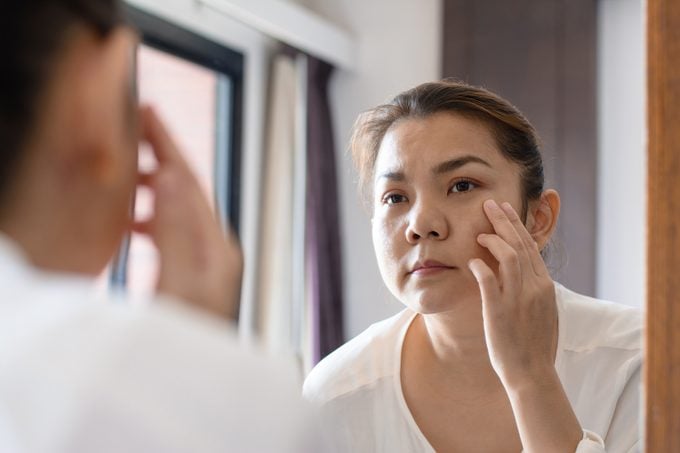
People most at risk for Demodex mite complications
D. folliculorum is common, but there are some people who are just more prone to Demodex mites, says Dr. Frieling. You may be more likely to have Demodex if you have:
- weakened immune system (from conditions such as HIV, chemotherapy, or advanced age)
- dermatitis
- skin infections
- acne
- alopecia
- rosacea
- fair or sensitive skin
Treatments for Demodex mites
In many cases, you don’t have to treat Demodex unless you are having symptoms. At-home treatment options can often help prevent the mites from spreading and ease symptoms.
“Gently cleansing your eyelashes with 50 percent tea tree oil solution is usually touted as an effective remedy because tea tree oil can kill the eggs that these mites lay on the skin,” Dr. Frieling says.
If the condition becomes bothersome and is causing pink eye or other uncomfortable symptoms, talk to your doctor.
There are effective topical and oral medications that can be highly effective in treating this condition. Your doctor might recommend face washes with active ingredients such as benzyl benzoate, salicylic acid, and selenium sulfide. A prescription ointment may help with eyelash scaliness and itching. Medicated drops can help treat pink eye.
The treatments for Demodex mites may be an effective rosacea treatment, too. That said, there are different treatment options for rosacea.
So while controlling the Demodex population on the skin can often help improve rosacea, it’s only one component of managing the skin condition, including avoiding rosacea triggers and finding the best skin care routine for rosacea.



















